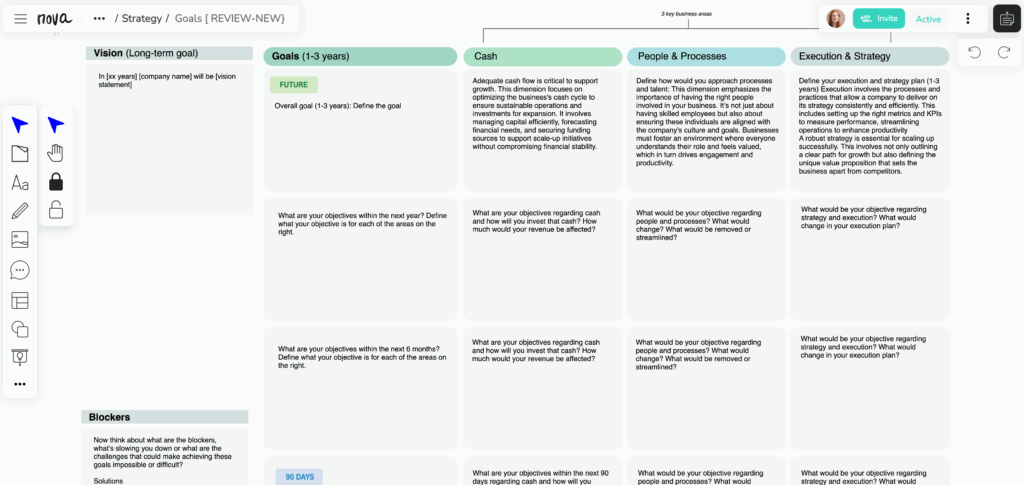Self-promotion is crucial to helping your business grow. Not only can it help you engage customers, but it is also important for forming connections within the industry and finding new opportunities.
However, self-promotion can often be daunting. Putting yourself out there can be challenging. You want to reach the right people and create the right impression. Here are some ways that you can build the perfect self-promotion strategy for you.
Table of Contents
Understanding your Audience
Effective audience understanding is the foundation of any business’s self-promotion strategy. You may adjust your advertising efforts to your target audience’s unique requirements and preferences by thoroughly researching their psychographics, habits, and demographics.
To begin with, determining your target demographics entails describing the traits of the people or groups who are most likely to be considering your goods or services. This covers elements like age, gender, place of residence, degree of income, and line of work. You can better reach and interact with these demographic categories by identifying them and then customizing your messaging and advertising channels accordingly.
Analyzing customer behavior and preferences can reveal important information about the factors influencing your audience’s purchase decisions in addition to demographic data. Studying their routines, passions, morals, and trouble spots is necessary for this. Finding out about customer preferences, including preferred communication methods, content formats, and purchasing reasons, may be aided by conducting surveys, interviews, and market research.
Furthermore, knowing your audience’s psychographics allows you to dive into their opinions, lives, and goals in addition to their basic demographics. Finding out about their passions, interests, values, and goals will help you tailor the language, tone, and images in your marketing materials.
Various target audience segments may be represented by creating comprehensive buyer personas that incorporate behavioral, psychographic, and demographic data. These personas serve as fictional representations of your ideal customers and guide your marketing efforts by helping you empathize with their needs and desires.
In order to create self-promotion techniques that work for your target market, it is imperative that you understand your audience. You can successfully engage and convert potential consumers by customizing your messaging, content, and promotional channels based on information regarding their psychographics, habits, and demographics.
Ways to Understand Your Audience
Analyze Social Media Insights
To obtain information on the demographics of your audience, engagement metrics, and content performance, use the analytics tools that social media platforms give.
Surveys
Create and distribute surveys to directly collect demographic and psychographic information from your target audience by posing inquiries about their needs, preferences, and behavior.
Customer Interviews
Have one-on-one conversations with your current clients to learn more about their goals, problems, and degree of satisfaction with your offerings.
Monitor Online Conversations
Pay attention to discussions taking place on social media, forums, and review websites pertaining to your sector or specialty in order to get insight into the attitudes, patterns, and frequently asked issues or concerns of your target market.
Utilize Website Analytics
Examine visitor demographics, activity patterns, and engagement metrics by analyzing website traffic data to gain a deeper understanding of your online audience.
Create Compelling Content
Since content creation is the main way to interact with your audience and spread your brand message, it is an essential component of company self-promotion tactics. Here’s how to write content that appeals to and engages your target audience.
Developing a compelling brand message is essential. Your brand message should make it obvious what you do, who you are, and how you differ from the competition. It must be true to who you are, memorable, and consistent with your brand’s ideals. You can produce content that embodies your brand identity and establishes a stronger connection with your audience by identifying your distinctive value proposition and brand personality.
It is important to employ diverse content forms in order to accommodate varying inclinations and patterns of consumption. This covers both visual and written information, such as infographics, videos, and photos, as well as written content like blog entries, essays, and whitepapers. Your content approach might be more diverse, which will help you reach a larger audience and maintain their interest across various platforms and channels.
Building confidence and trust with your audience requires producing material that adds value. This might be informative material that tackles issues or problems that your target audience frequently faces, engaging content that captivates and amuses, or action-inspiring content that inspires and encourages. You can produce content that connects with your audience and motivates them to interact by getting to know their needs and interests.
To increase your content’s visibility and reach, it’s also critical to optimize it for search engines. In order to do this, you must perform keyword research to find pertinent terms and phrases, optimize on-page components like headers, titles, and meta descriptions, and produce excellent, audience-friendly content. You can boost your brand’s online exposure and draw in more organic visitors by implementing SEO best practices into your content strategy.
Developing engaging content is crucial to successful company self-promotion tactics. You may provide content that connects with your target market and encourages engagement and conversions for your company by developing a compelling brand message, experimenting with different content forms, offering value to your audience, and search engine optimizing your work.
Ways to Create Compelling Content
Storytelling
Employ storytelling strategies to produce material that emotionally engages and captivates your audience. Provide realistic case studies, anecdotes, or first-hand accounts that highlight your brand’s principles and offer answers to customers’ issues.
Value Proposition
By speaking to the needs, interests, or problems of your audience, your content’s value proposition should be made apparent. Give them useful advice, doable solutions, or insightful knowledge that makes their life easier or solves their difficulties.
Visual Appeal
To make your information more aesthetically pleasing and readable, use visually appealing components like photos, videos, infographics, and animations. Text by itself is frequently less remembered and interesting than visual material.
Consistency
To establish credibility and trust with your audience, make sure that your brand voice, style, and quality are all the same in all of your material. Over time, consistency builds a stronger relationship with your audience and serves to establish your brand identity. Even if you are making great content, your customers will not be engaged if you are not regular.
Leverage Social Media
Using social media to communicate with customers, increase brand recognition, and encourage participation is a potent self-promotion tactic for companies. Here’s how to use social media networks to their fullest potential:
First, determine which platforms are best for your company based on the places where your target market is most engaged. Every social media network, including Facebook, Instagram, Twitter, LinkedIn, and TikTok, has different user demographics and habits, so it’s critical to match your presence to those of your audience.
Secondly, establish a discourse and feeling of community among your followers to engage them in a real way. In order to humanize your brand and gain the audience’s confidence, swiftly reply to messages, comments, and mentions. You should also actively participate in pertinent debates and trends.
Produce and distribute informative material that speaks to the needs and interests of your audience. Posts that are instructive, behind-the-scenes looks, user-generated material, advertisements, and enjoyable content that enhances value and fosters connection can all fall under this category.
Additionally, use social media advertising to expand your audience and target particular demographics with customized offers and messaging. You can reach the appropriate individuals at the right time with the use of advanced targeting tools available on platforms like Facebook Ads, Instagram Ads, and LinkedIn Ads.

Ways to Leverage Social Media
Selecting a Platform
Pick the social media channels that best fit the characteristics, hobbies, and lifestyle of your target market. Concentrate your efforts on the platforms that have the most engaged and active audience.
Content Strategy
Create a plan for your content that incorporates several content types, including text-based articles, videos, infographics, and photos. Provide important, timely, and captivating material for your audience, and customize it to fit the specific characteristics of each platform and the tastes of your target audience.
Regular Posting
To keep your audience interested in your material and engaged, stick to a regular publishing schedule. Try varying the frequency and timing of your posts to find the best time slot for connecting with your audience.
Engagement and Interaction
Take an active part in the audience by swiftly answering messages, comments, and mentions. Encourage user-generated material, start conversations, and provide questions to help build a feeling of community.
Utilize Analytics
Track and evaluate the effectiveness of your campaigns and content by utilizing social media analytics tools. Determine which content connects best with your audience by analyzing data like reach, engagement, and conversions. Then, adjust your approach appropriately.
Networking and Collaborations
Effective self-promotion tactics for firms rely heavily on networking as it fosters important relationships, teamwork, and expansion prospects. The following are some successful ways to use networking to broaden your audience and improve the visibility of your brand:
Develop a compelling personal brand that conveys your beliefs, area of expertise, and USP. Your professional objectives and aspirations should be in line with your personal brand, which should also be distinctive and real. Establishing yourself as a reliable authority in your field can help you draw in colleagues and like-minded people.
Engage in active participation in industry conferences, online groups related to your specialization, and networking events. To create enduring connections and develop a reputation in your field, have meaningful discussions, impart knowledge, and help people.
Look for chances to have one-on-one encounters with thought leaders, colleagues in the industry, and possible collaborators. These in-person contacts offer a forum for more in-depth discussions, the sharing of expertise, and possible joint ventures.
Make use of social media sites like LinkedIn to grow your professional network and establish connections with influential people in the business. To improve your online exposure, contribute to relevant groups, share worthwhile material, and comment on other people’s postings.
Additionally, don’t undervalue the effectiveness of word-of-mouth advertising and recommendations. Develop trusting connections with current partners, clients, and coworkers, and ask them to recommend you to their networks. Referrals from friends and family are frequently the most effective kind of advertising and can result in profitable company ventures.
Ways to Network and Collaborate
Establish Specific Goals
Identify the goals you have for your networking, such as growing your clientele, locating possible partners, or looking for mentoring possibilities.
Have a Clear Pitch
Create a succinct and engaging elevator pitch that explains your background, areas of expertise, and value proposition. This will enable you to successfully communicate your value proposition and leave a lasting impact.
Attend Industry Events
Participate in conferences, seminars, and networking events pertaining to your field to meet like-minded professionals and potential collaborators in person.
Utilize Social Media
Engage with coworkers, thought leaders, and potential business partners on platforms like LinkedIn, Twitter, and industry-specific forums to expand your professional network and stay up to date on market trends.
Provide Value
Assist, counsel, and suggest to individuals in your network. Use your resources, abilities, and expertise with kindness and generosity.
Follow Up
Send tailored emails or LinkedIn messages to follow up on your first contacts in order to cultivate connections and explore potential opportunities for future cooperation.
Self-promotion is an integral part of expanding your business presence. These tips can help you get started with crafting the perfect strategy for your self-promotion.
For more similar blogs, visit EvolveDash today!
FAQs
- What is self-promotion and why is it important for businesses?
Self-promotion is the process of marketing your business and building relationships to attract more customers and opportunities. It helps increase brand awareness and trust.
- How can I better understand my audience for effective self-promotion?
Use tools like social media insights, surveys, customer interviews, and website analytics to gather data about your audience’s demographics, behavior, and preferences.
- What type of content should I create for self-promotion?
Create content that adds value to your audience, such as educational blog posts, engaging social media updates, and videos that reflect your brand’s personality and values.
- Which social media platforms should I use for self-promotion?
Choose platforms that align with where your target audience is most active. For example, LinkedIn works well for B2B businesses, while Instagram and TikTok are better for visual, consumer-facing brands.
- How can networking improve my self-promotion strategy?
Networking allows you to form meaningful connections, collaborate with industry peers, and gain referrals that can expand your reach and boost your credibility.



















